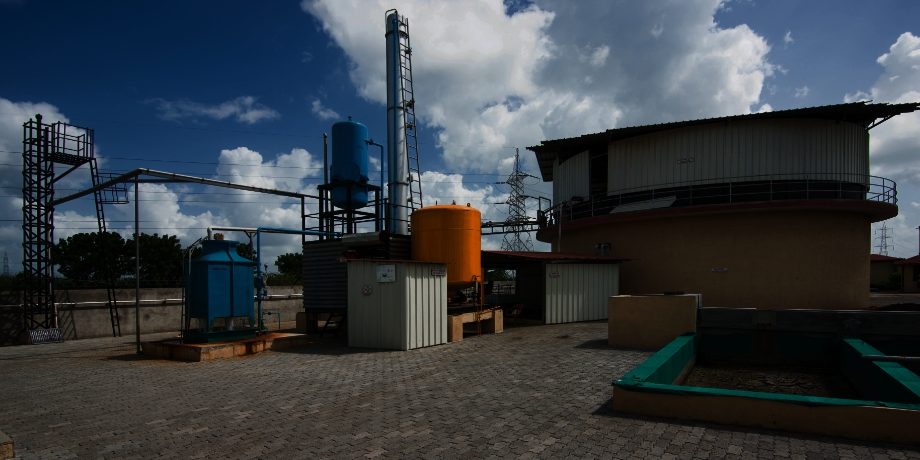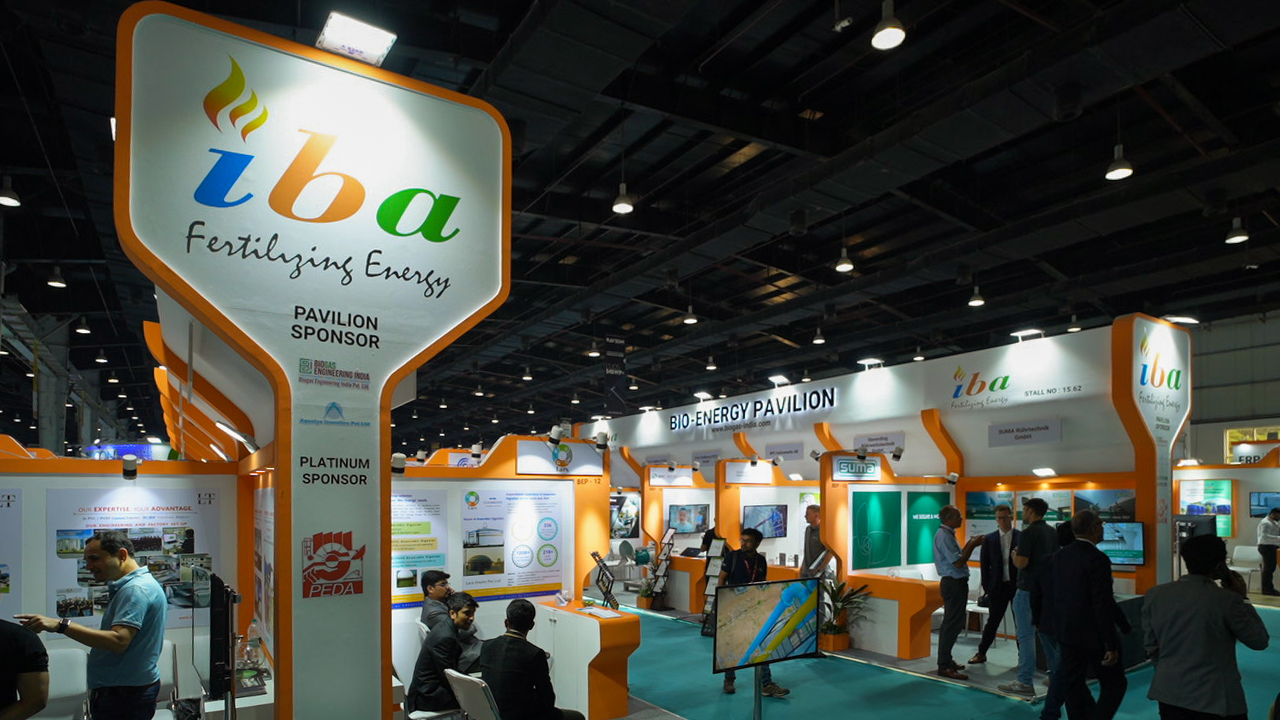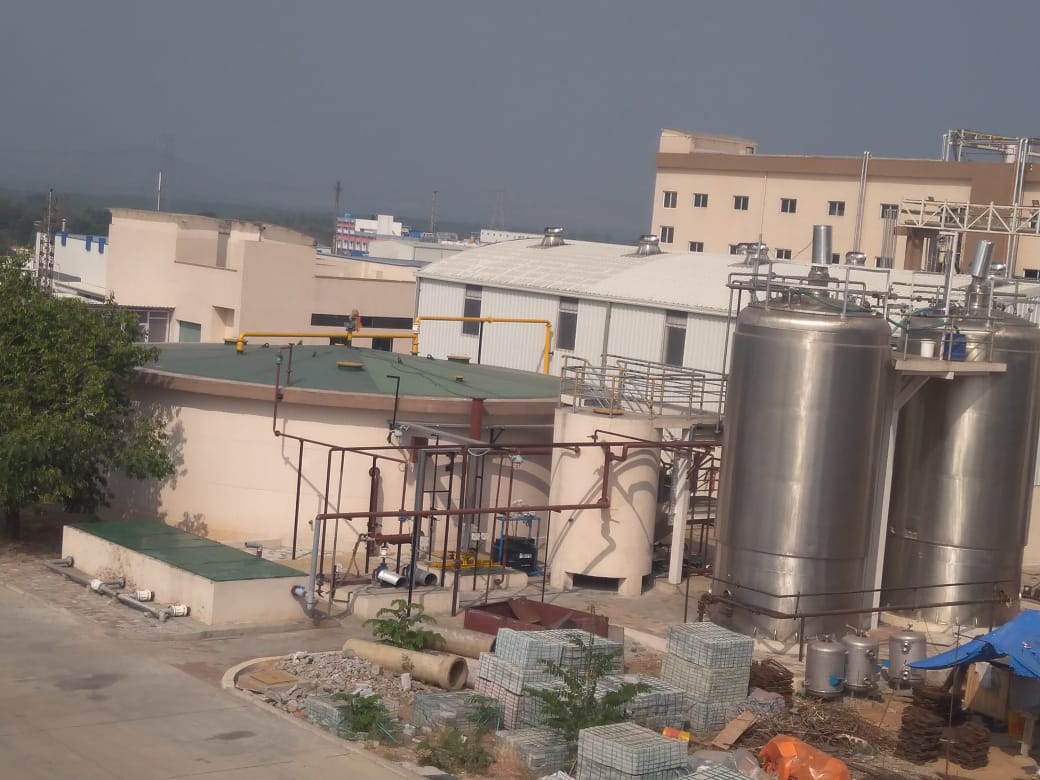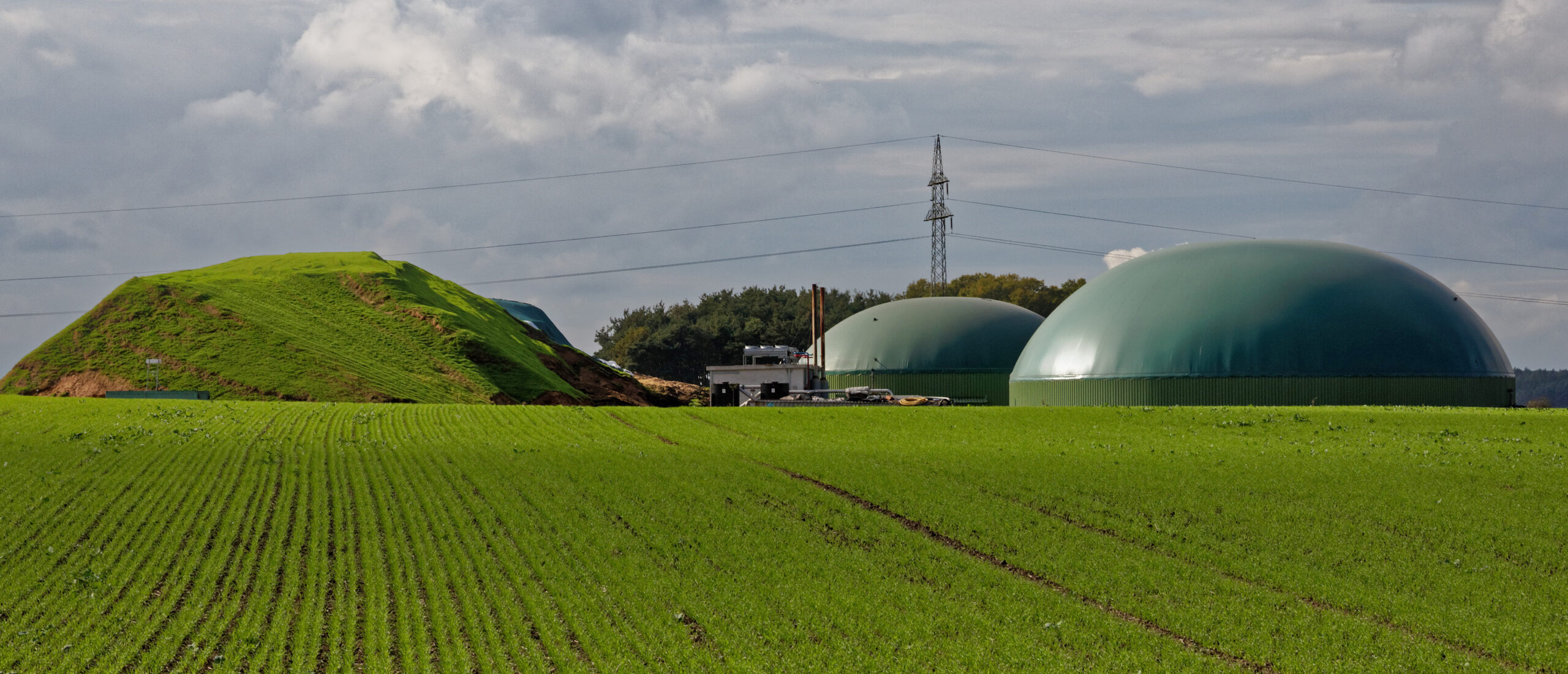Currently, about 75% of the world‘s overall energy supply of about 410 EJ per year is derived from fossil fuels. Around 10-15% of this is being generated via biomass energy from Biomass and hence generating and growing biomass is a must to generate renewable energy. In recent times, sustainable energy generation from the biomass is a hot topic, and there are cases, where the generation of energy is almost equivalent to 35-40% of their total energy demand. Biomass combustion accounts for more than 70 – 75% of the current mode of energy generation from biomass. Liquid biofuels cover only a small part and the most used are ethanol and biodiesel. Ethanol is produced from sugar or starch crops, while biodiesel is derived from vegetable oils or animal fats.
Currently, biogas plays relatively a smaller role but steadily growing across the country. Traditionally applied for sewage sludge treatment- and stabilisation purposes, energy recovery from biogas was a welcome by-product. However, biogas has started to become a well-established energy resource in Europe, especially through the use of renewable biomass i.e. “energy crops” apart from the biodegradable waste resources. After the success stories from Germany, Sweden and various other countries, where the biogas production from the energy crops have gained importance, biogas production from manure and/or other substrates, continued to develop as an important new farm enterprise across India.
Biogas generation from the energy crops is also not a new concept and have their existence since as old as 1930, which was first tried in the USA and later in 1950 was tried and tested in Germany. However many times this topic raises the food versus fuel debate i.e., a dispute over the impact of biofuel production on food security. According to the FAO, the world population will reach 9.1 billion by 2050. This rise in population will be accompanied by rapid urbanisation, increase in income levels and change in dietary habits. A 70 per cent increase in agricultural output is needed to meet the future projected demand for food. In this article, the main focus is on the energy crops, which are normally not a threat to food security like Napier grass, maize residuals etc.
The anaerobic digestion of energy crops have been successfully demonstrated and commercialized in many countries, the process, however, is normally not in practice in India. Energy Crop digestion to generate biogas was earlier not considered to be economically feasible. Earlier, crops, plants, plant by-products and waste materials were just added occasionally to stabilise anaerobic waste digesters. With the increase in the oil prices and various support systems for biogas e.g., in Germany the development was started on energy crops and slowly and steadily the number of plants multiplied like anything and by 2005- 2006, the biogas plants working on energy crops were all over Germany as well as in Austria and this was only possible due to the favourable national frameworks of eco-tariffs paid for the renewable energy and later attributed till a limited extent to the boost of Biomethane as well.
There were many crops tested for the biogas potential but few which are favourites based on overall plant conditions are varieties of grass, clover, cereals, maize, sunflower etc., proved to be feasible among all. Even Sorghum, Sugar beet and sweet potatoes were also tried and tested. Energy crops are being used for digestion directly after harvest. The harvest time can influence the bio-degradability and hence the methane yield from plants. Late harvest usually is associated with higher cellulose content in the biomass, causing slower bio-degradation and less methane yield. For a year-round availability of substrates, the crops are most frequently stored or silaged at the site. If there is extra unusable heat energy available at the biogas plant site, the same can be used for drying of these substrates, which will ensure longer storing time without losing much of organic content. Ideally, the crops/feedstocks used for ensilage should have total solid contents between 25–40% whereas feedstocks materials with total solid contents less than 18% result in poor silage qualities, high leachate accumulation and subsequently end up in less biogas generation. Best on-site storage of the feedstocks results in rapid lactic acid generation approx. 4-12% and acetic acid fermentation approx. 1.8 – 4.5%, causing a decrease of the pH to 4–4.5 within several days. Once the pH is decreased then automatically the butyric acid formation is almost prevented. Addition of acid, or of commercially available ensiling additives, can accelerate the lactic acid fermentation and prevent further storage failures.
Silages are made to ensure that the biogas plant runs for 365 days so one needs to plan accordingly to store sufficient feedstock at the site. Another option to store the feedstock apart from silages is to use bag silos at the site. Generally, these bag silos are available in the sizes ranging from 1-meter diameter to 4-meter diameter and 10-100 meter in length. In the bigger plants, the bag silos are filled by using packing machines on-site and these machines are also available in various sizes ranging from 1-10 MT/h. Europe stores maize silage in the dry form which is the easiest way to store or even the waste heat generated at the site can be used to dry the substrates for further storing. The stored or even fresh energy crops are the perfect solution as a feedstock to the digesters. One needs to look into the details of the raw material carefully as more the content of fibres i.e., cellulosic part – the longer the retention time inside the digesters for the proper digestion. Fibres also have the ability to block certain pumps, equipment’s, pipes, agitators etc., which needs to be addressed properly. Also, one needs to take proper care to avoid sand or silt or soil addition in the digesters along with the energy/any crops, which easily settles inside the digester.
Precautions need to be taken while adding these crops after chopping; storage needs the right kind of input size along with a series of treatments like homogenization, sand removal using various filters/onsite low-cost solutions. Generally, the digesters which work on the crops as their feedstock have the total solid content ranging from 15-35%. In the case of higher dry matter content, the pumping and mixing solutions need to be properly addressed. Various types of feeding system need to be evaluated carefully when working on feedstock’s for example, automatic feeding system, semi-automatic feeding system, continuous feeding system etc.
Care has to be taken when the feedstocks are changed in intervals as the digester behaviour needs to be studied along with the digester design, changing composition, fluid dynamics and the biodegradability curve. If not studied properly then the lower gas yields or the overall productivity of the digester goes down by a certain extent within a period of 2-3 months after the raw material changes. Proper process control needs to be in place if the feeding material to the digester changes, feeding has to be done slowly with the increasing rates, which needs to be identified beforehand. Increasing volatile solids content and the scum formation along with the dropping of pH needs to be controlled from day one if one intends to change the feedstock chemistry of the digester.
Various wet, as well as dry fermentation techniques, can be followed depending on the total solid content of the feed material which may vary from 10% for wet fermentation to 25-30% within the digesters for dry fermentation. Both wet, as well as dry fermentation, can work on mesophilic as well as thermophilic temperature ranges. Energy crops with larger retention time work well and hence the digester sizes have to range from 35-75 days of holding period before homogenisation. The digesters with larger retention times have to be designed to ensure the 85-90% destruction of volatile solids, which will ensure the sufficient feedstock use and no emissions from the treated water/slurry after the digestion process. After the digestion process, the slurry needs to be stored in the buffer tanks. It is proposed to have an enclosed system for slurry storage to ensure no methane loss and an odourless scenario. If the volatile solids are less than 90% degraded then there will be some foul odour at the plant, which needs to be tested periodically at all the biogas plants by doing small residual fermentation tests of the slurry, which is generated from the biogas plants working on these feedstocks. It is advisable to opt for the pre-treatment as well as the organic enhancement of the slurry or the manure before selling in the open market after solid and liquid separation.
Energy crops can be fed to the digester as mono-digestion or also as co-digestion of various crops or as co-digestion of the energy crops with other feed material i.e., in multi-feed form. This basically should result in a better C: N ratio. Furthermore, using energy crops as the feedstocks to the digester also allow the growth of agriculture through the increased demand of locally grown raw material and local employment as well as earning ways to the farmers. Long-term supply agreements can be signed to start dealing if the biogas plants are not located nearby. These kinds of projects promote the cultivation of the energy crops, rural investments and new local jobs. If sustainability criteria are followed the use of energy crops will reduce GHG emissions by replacing fossil fuels. Instead of a single crop, multi-feed digestion with proper care has to be followed, which ensures the feedstock availability round the year.
It might be that some crops give similar biogas production yield per ton of volatile solid destroyed, but different crops give different biomass yields per acre/hectare. A particular crop can also show different yields per acre/hectare under different climatic conditions. Low input-, high diversity mixtures of native grassland perennials, may improve soil and water quality. In the long run, perennials may even outnumber the annual single crop in terms of biomass yield per acre/hectare. Furthermore, such single raw materials are net sequesters of carbon, can be produced on agriculturally degraded lands and do neither displace food production nor cause loss of biodiversity. Before selection of such kinds of crops, one needs to carefully evaluate various factors such as climatic conditions, robustness against diseases, availability of water and biomass yield per acre/hectare for feeding the digesters. From practical experience, a best economic operation of energy crop digestion can only be achieved, if the high crop and biogas yields can be realised at reasonable low investment, raw material and production costs.
Digestion of multiple feedstocks (co-digestion) offers various kinds of benefits like:
· Digester operational advantages – Better nutrient balance, improved co-substrate handling, improved fluid dynamics
· Improved overall process economics – Higher biogas generation yields
· Most of the chemical energy of the feedstocks is turned into the biogas, less spent solids are to be processed and applied as organic fertilizer/manure.
· If the crops are digested along with food/vegetable wastes then less burden on landfills can be seen and with many accountable and priceless benefits being saving our environment from emissions.
One has to take care of following points before the addition of another feedstock to the digester (co-digestion)
· Whether the feeding, stirring equipment’s need some design changes?
· Whether the feedstock needs some clearances or approvals (ex., Spent wash transport)?
· Whether the feedstock requires homogenisation and hygenisation before adding to the digester?
Care has to be taken for ensuring SUSTAINABLE OPERATIONS. Only a well maintained high-quality digester organic manure should be allowed for composting as well as enhancement and further sale of the manure in the open markets. High-quality industrial co-substrates are limited. In the future much more, co-substrates must be derived from “Energy Crop” production or “Crop” production suitable as per our overall scenario.
Disclaimer: The opinion, views, data, images presented in this blog is shared by the guest author in his/her personal capacity. The expressed opinion in no-way reflects the standpoint of Indian Biogas Association (IBA).





1 Comment
Kindly arrange to send details for setting up of grass based Biogas plant and case studies if any .